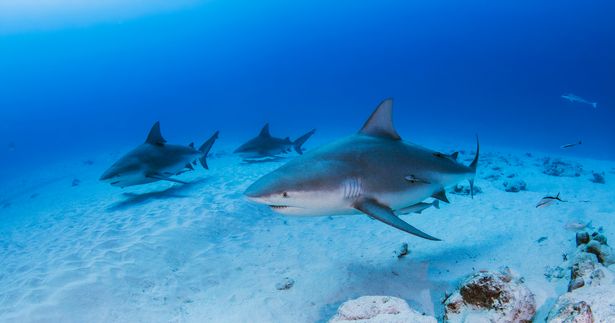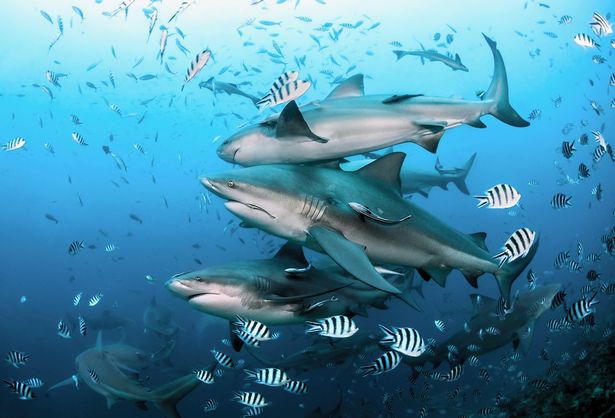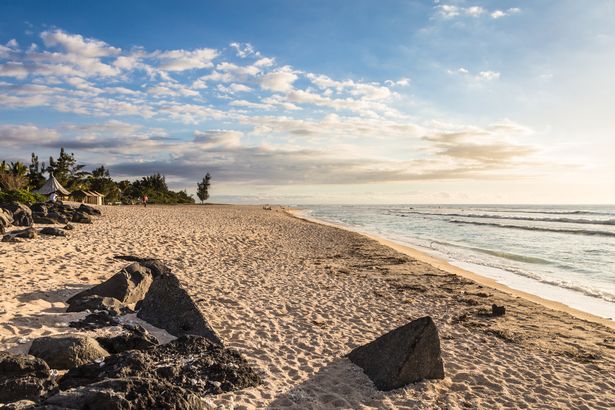Tourists have been told not to swim or surf in the waters of an idyllic island near the coast of Madagascar because it’s swarming with sharks.
Ten people have been killed in recent years around Réunion Island – a paradise location which sits in the Indian Ocean in an area labelled a ‘shark highway’.
The French territory now has the highest number of fatal shark attacks in the world and authorities have banned swimming or surfing outside its relatively safe coral lagoon amid fears of further attacks.
Around 30 people have been killed and 56 have been attacked while swimming off Réunion since 1913 – with eleven fatalities since 2006, and ten since 2011.

(Image: Getty Images/Image Source)
The death rate averages three deaths per one million people – more than three times that of South Africa and much higher than the rate in Australia and the USA.
Experts believe its partly because the island sits on a shark ‘highway’ between Australia and South Africa and that its active volcano Piton de la Fournaise attracts them in, reported The Sun.
Ninety percent of the attacks are thought to have been carried out by Bull sharks. These are considered the deadliest to humans because of their aggressive tendencies and ability to migrate up rivers.

(Image: Getty Images)
Bull sharks prefer shallow water, live near high population areas, and have the best ability to move into freshwaters – particularly large, coastal rivers and lakes. This behaviour brings them into more contact with humans than most other species of sharks, making them responsible for fatally biting more people.
Some of the most recent attacks at Réunion Island include Brit Richard Martyn Turner, 44, whose severed hand was found inside a shark in November 2019.
In May that same year Kim Mahbouli, 28, a French tourist, was attacked and killed by a shark while surfing in an area where swimming was banned.
Fisherman Floris Huet also died in January 2019 after a shark ripped off his left leg, and in 2020 there were 57 shark attacks around the island, the deadliest year since 2013, with ten unprovoked bites resulting in deaths.

(Image: Getty Images)
The island’s government has attempted to make the waters safer by carrying out culls and investing in anti-shark studies, but scientists are still not sure what has been driving the surge in attacks, so for now, surfers and swimmers are banned from the area.
Professor Erwann Lagabrielle has been researching shark activity in the waters around Réunion, to establish why they are so dangerous, reported 9News.
His research has so far shown that the probability of being attacked by a shark at Réunion has increased “by a factor of 23” since the 1980s.
Prof Lagabrielle was inspired to conduct the research after seeing his friend being attacked by a two-metre bull shark in 2015.
“It was like a horror movie,” he said.
He’d been swimming at Saint-Leu with Rodolphe Arriéguy, who was attacked just 20 metres away from him.

“The water was white foam and then the white turned to pink, and the pink turned to red,” Prof Lagabrielle recalled.
“I swam to my friend and that was the most frightening thing — I was swimming against my own instinct.”
Arriéguy, 45, had been bitten on the arm and Prof Lagabrielle used his surfboard leash to make a makeshift tourniquet and stop the bleeding before swimming him back to shore.
Arriéguy was rushed to hospital and survived but lost his arm.
“The question, next is what can explain this increase?” Dr Lagabrielle said, discussing the continuation of his studies into the soaring number of shark attacks.
“It’s either an increase in the population of sharks or a change in their behaviour.

(Image: Getty Images)
“These can be explained by other factors such as change in water temperature, fishing targeting shark populations.”
Dr Blake Chapman, a marine biologist who examined shark neuroscience for her PhD, told Guardian Australia that some attacks with multiple bites suggested the sharks might be deliberately preying on humans.
The cloudy waters created by sediment from the volcano would also make conditions ideal for the sharks to sneak up on their prey.
Dr Chapman said: “When they bite more than once it’s more likely to be fatal as there’s more blood loss.”
Reaching lengths of 11 feet and weights of up to nearly 315 kg, Bull sharks are one of the largest requiem sharks. They are very aggresive predators and eat a variety of prey including several species of bony fishes and also small sharks, some mammals, seabirds, and sea turtles. Large, adult bull sharks don’t have any natural predators.


